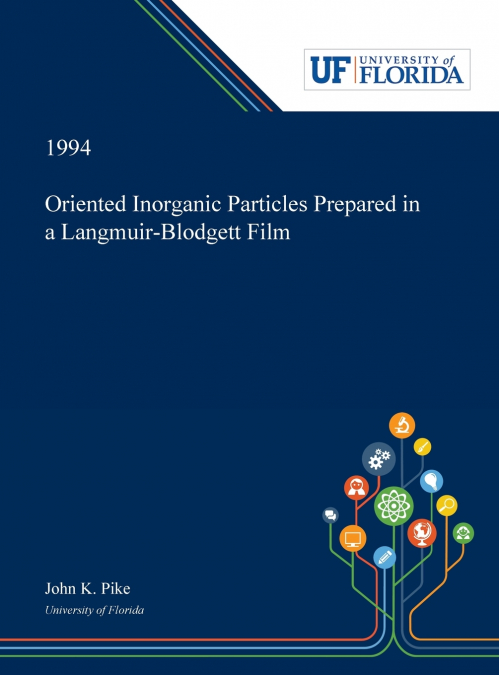
 Librería Perelló (Valencia)
Librería Perelló (Valencia)
 Librería Aciertas (Toledo)
Librería Aciertas (Toledo)
 Librería Elías (Asturias)
Librería Elías (Asturias)
 Donde los libros
Donde los libros
 El AlmaZen del Alquimista (Sevilla)
El AlmaZen del Alquimista (Sevilla)
 Librería Kolima (Madrid)
Librería Kolima (Madrid)
 Librería Proteo (Málaga)
Librería Proteo (Málaga)
Abstract:For the first time, oriented arrays of inorganic particles have been synthesized in a Langmuir-Blodgett (LB) film. Particles of MX2, where M = Cd and Mn, and X = I, Br, and Cl, are formed by the reaction of a deposited cadmium or manganese arachidate LB film with the corresponding gaseous hydrogen halide. The reactions are monitored by attenuated total reflectance FT-infrared spectroscopy which shows that they go to completion and that the organic LB film remains crystalline afterward. X-ray photoelectron spectroscopy and transmission electron diffraction are used to identify the metal halides and show that in each case only one inorganic species is formed. Transmission electron diffraction shows that CDI2 particles are formed exclusively with their [001] crystal axes perpendicular to the plane of the LB film and for domain sizes up to several microns discrete particles have the same in-plane orientation. CdBr2 and CDCl2 particles are each observed to form with a mixture of two discrete orientations: [001] axis parallel or [001] axis perpendicular to the LB plane. MnI2, MnBr2, and MnCl2 particles are also oriented with their [001] axes either parallel or perpendicular to the plan but to a lesser degree than the cadmium halides. In all of the examples, domains are observed where arrays of particles exhibit common in-plane orientations. It is proposed that the organized organic matrix is responsible for orienting the inorganic particles, and the potential lattice matching between the inorganic particles and the organic matrix is discussed.In a separate project, an X-ray photoelectron spectroscopic investigation was performed on the novel one-dimensional magnetic chain compound tetramethyammonium nickelnitrite. This material was synthesized in our lab and has an interesting crystal structure in which there are two chemically distinct nickel centers. The results of experiments aimed at resolving those two nickel centers are discussed.Dissertation Discovery Company and University of Florida are dedicated to making scholarly works more discoverable and accessible throughout the world. This dissertation, 'Oriented Inorganic Particles Prepared in a Langmuir-Blodgett Film' by John K. Pike, was obtained from University of Florida and is being sold with permission from the author. A digital copy of this work may also be found in the university’s institutional repository, IR@UF. The content of this dissertation has not been altered in any way. We have altered the formatting in order to facilitate the ease of printing and reading of the dissertation.